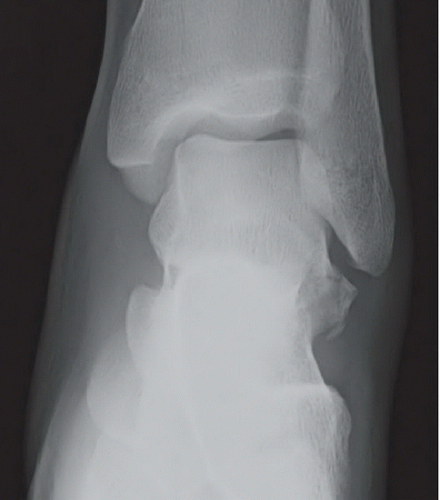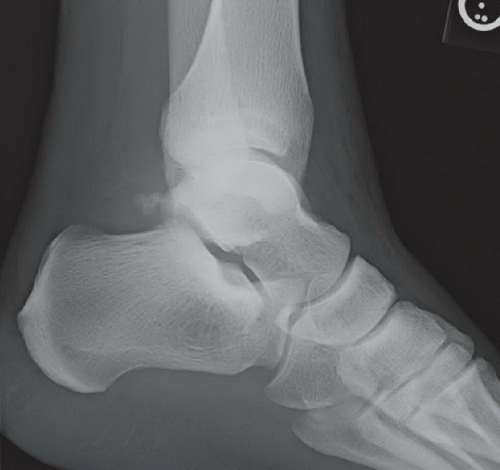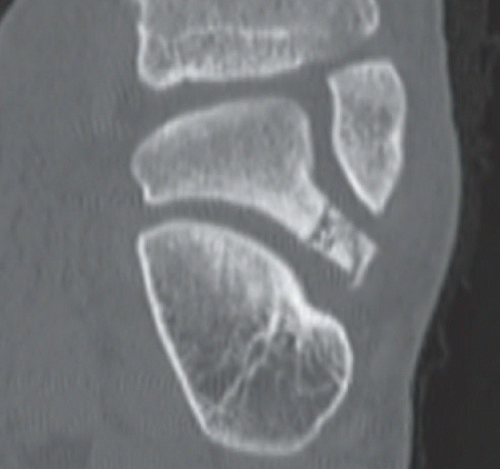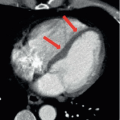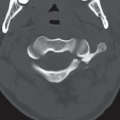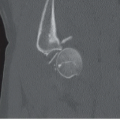Lateral Process of Talus Fracture
Alexander D. Wyckoff
Daniel B. Nissman
CLINICAL HISTORY
25-year-old male with pain following a snowboarding incident.
FINDINGS
On the anteroposterior (AP) view of the ankle (Fig. 20A), a thin linear fragment is present along the lateral margin of talus, inferior to the lateral process of the talus. The fragment is displaced less than 2 mm. The fragment is difficult to visualize on the lateral projection (Fig. 20B) because of the overlying calcaneus. Incidental note is made of an os trigonum. Coronal CT image of the same patient (Fig. 20C) demonstrates a minimally displaced, comminuted fracture through the lateral process of the talus, which extends to the talofibular and subtalar joints.
DIFFERENTIAL DIAGNOSIS
Lateral process of the talus fracture, talar neck fracture.
DIAGNOSIS
Lateral process of the talus fracture.
DISCUSSION
Lateral process of the talus fractures are fractures of active individuals that are often misdiagnosed as an ankle sprain. They are classically referred to as “snowboarder fractures” because the injury often results from forced dorsiflexion and inversion, which reflects the orientation of the foot while strapped into snowboard bindings. In fact, it has a 15-fold greater incidence in snowboarders than in the general population.1 Radiographs can underestimate the extent of injury or even miss the fracture 40% to 50% of the time.2 Knowledge of this entity is important because fractures that are missed or treated inappropriately have a significant risk of poor outcome, including nonunion, early osteoarthrosis, and in some cases the eventual need for subtalar fusion.
Stay updated, free articles. Join our Telegram channel

Full access? Get Clinical Tree


